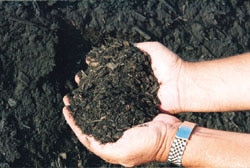A new report by the Inspector General claims that the U.S. Environmental Protection Agency (EPA) promoted the use of coal ash without properly analyzing the risks. Coal ash is the byproduct produced when coal is burned, also referred to as “fly ash” or “bottom ash.”
The EPA began promoting the “recycling” of coal ash waste during the Bush administration, when energy companies and federal officials worked out a deal where the EPA would allow companies to sell their waste without federal oversight. The EPA held numerous town hall meetings last year to get citizens’ input on the matter before they issue a ruling on whether or not the coal ash waste should be considered “hazardous.”
DeSmogBlog and Polluter Watch published a report last year that details the lobbying blitz launched by coal producers to fend off EPA oversight of hazardous coal ash, including the suspiciously cozy relationship between the coal industry and the Bush EPA. The new Inspector General report confirms that the Bush EPA erred in its review of the safety of the widespread re-use of coal ash in many products and other applications.
The new Inspector General’s report states that:
EPA did not follow accepted and standard practices in determining the safety of the 15 categories of CCR beneficial uses it promoted through the C2P2 program. EPA’s application of risk assessment, risk screening, and leachate testing and modeling was significantly limited in scope and applicability. Without proper protections, CCR contaminants can leach into ground water and migrate to drinking water sources, posing significant public health concerns.
Independent studies have shown just how toxic coal ash can be. According to a recent report, coal ash contains a compound known as hexavalent chromium, often called “hex chromium.” From the report:
“Hexavalent chromium is a highly toxic carcinogen when inhaled, and recent studies from the National Toxicology Program indicate that when leaked into drinking water, it also can cause cancer.”
The group Public Employees for Environmental Protection (PEER) has also done studies showing that coal ash contains toxic levels of mercury.
But the list of hazardous coal ash constituents doesn’t end there. Loaded with dangerous toxic substances, the amount of coal ash produced in a single year is reported to contain 44 tons of mercury, 4601 tons of arsenic, 970 tons of beryllium, 496 tons of cadmium, 6275 tons of chromium, 6533 tons of nickel, and 1305 tons of selenium.
Scientific American also reports that in many instances, the coal ash produced by coal plants is actually more radioactive than nuclear waste.
Coal-burning utilities produce around 130 million tons of coal ash every year, and not nearly enough of it is properly handled as the hazardous waste it is. Instead the industry cleverly created a “recycling” program in order to turn its toxic waste into another profitable product. Coal ash is now sold for numerous applications, including as a concrete filler, as wallboard, and even to make bowling balls. This nets the industry a whopping $11 billion a year.
The coal industry’s lobbying and PR efforts have succeeded in delaying action to protect the public from this hazardous waste yet again. EPA recently claimed that they will not issue a ruling on the toxicity of coal ash this year, despite Administrator Lisa Jackson’s promises to do so early in her tenure.
For the time being, a hazardous waste that should be federally regulated and disposed of properly is instead serving as a cash cow for the coal industry. Hopefully this Inspector General report will equip EPA with even more incentive to rein in this dangerous industry waste immediately.
Subscribe to our newsletter
Stay up to date with DeSmog news and alerts






